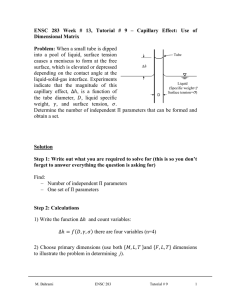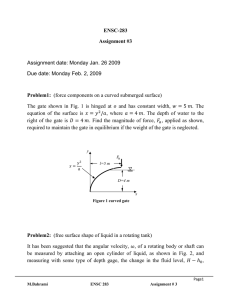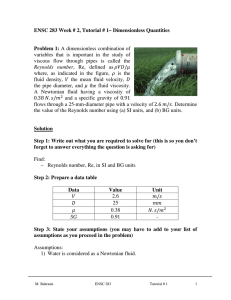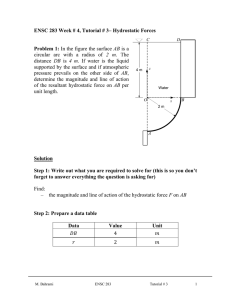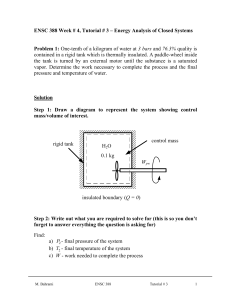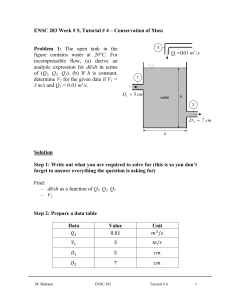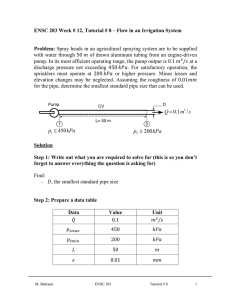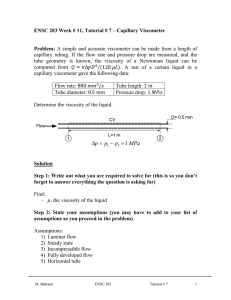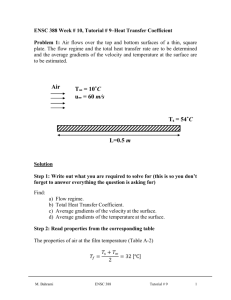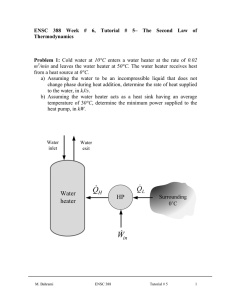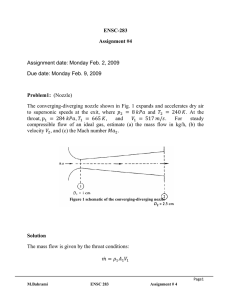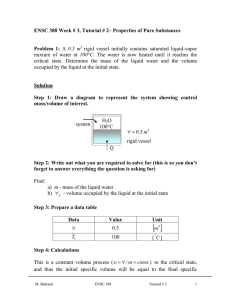ENSC 283 Week # 3, Tutorial # 2– Pressure Distribution... Problem 1:
advertisement
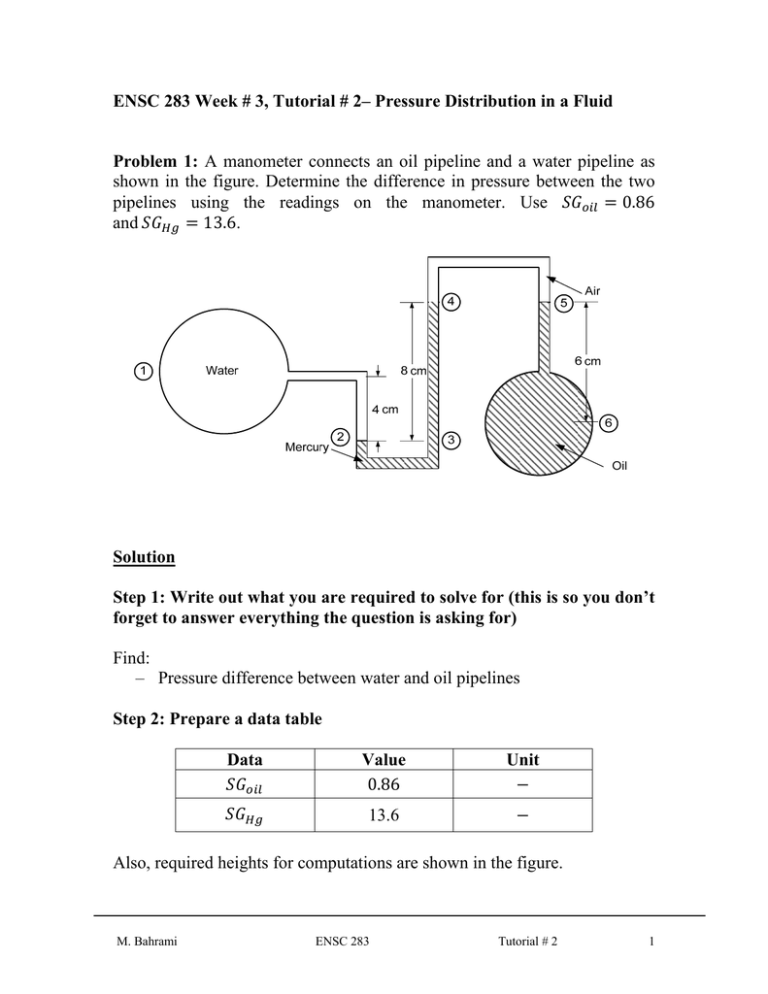
ENSC 283 Week # 3, Tutorial # 2– Pressure Distribution in a Fluid Problem 1: A manometer connects an oil pipeline and a water pipeline as shown in the figure. Determine the difference in pressure between the two pipelines using the readings on the manometer. Use 0.86 13.6. and Solution Step 1: Write out what you are required to solve for (this is so you don’t forget to answer everything the question is asking for) Find: – Pressure difference between water and oil pipelines Step 2: Prepare a data table Data Value 0.86 Unit 13.6 Also, required heights for computations are shown in the figure. M. Bahrami ENSC 283 Tutorial # 2 1 Step 3: State your assumptions (you may have to add to your list of assumptions as you proceed in the problem) Assumptions: 1) The specific weight of water is assumed to be 9800 / . Step 4: Calculations The points of interest have been positioned on the manometer in the figure. The pressure at point 2 is equal to the pressure at point 3: (Eq1) 0.04 0.08 (Eq2) Note that the heights must be in meters. The pressure at point 4 is essentially the same as that at point 5, since the specific weight of air is negligible compared with that of the oil. So, 0.06 (Eq3) Finally, 0.04 M. Bahrami 13.6 9800 0.08 0.86 9800 0.06 . 0.06 (Eq4) 0.04 9800 Note that 0.08 and ENSC 283 9764.72 . ⁄ . Tutorial # 2 2 Problem 2: The 6-ft-diameter drainage conduit, shown in the following figure is half full of water at rest. Determine the magnitude and the line of action of the resultant force that the water exerts on a 1-ft length of the curved section BC of the curved section BC of the conduit wall. 3 ft 1.27 ft A A B B A CG W F1 1 ft θ FH O 1 ft C C FV FH θ FV FR tan(θ) = (b) (a) (c) We first isolate a volume of fluid bounded by the curved section BC, the horizontal surface AB, and the vertical surface AC, as shown in Fig. (b). The volume has length of 1 ft. The forces acting on the volume are horizontal force, F1, which acts on the vertical surface AC, The weight W, of fluid content within the volume, and horizontal and vertical components of force of conduit wall on the fluid, FH and FV, respectively. The magnitude of F1 is found from the following equation (the pressure at the centroid of the vertical surface AC times its area): F1 = γhcA = (62.4 lb/ft3) ( ft) (3 ft2) = 281 lb and this force acts on the center of pressure of the vertical plate AC which is located 1 ft above C as shown. The fluid weight W, is W= γ V = (62.4 lb/ft3) (9π/4 ft2) (1ft) = 441 lb and acts through center of gravity of the mass of fluid (located at 4R/3π from center of the pipe), that is 1.27 ft to the right of AC as shown. Therefore to satisfy equilibrium: M. Bahrami ENSC 283 Tutorial # 2 3 FH = F1 = 281 lb & FV= W= 441 lb And magnitude of resultant force is: 281 441 523 It is obvious that FR passes trough A (the center of the pipe), since at each point on the curved surface of the conduit, the elemental force due to the pressure is normal to the surface. Using the triangle shown in Fig. (c), one can calculate the angle of FR as follows: 281 441 M. Bahrami ENSC 283 32.5 Tutorial # 2 4
